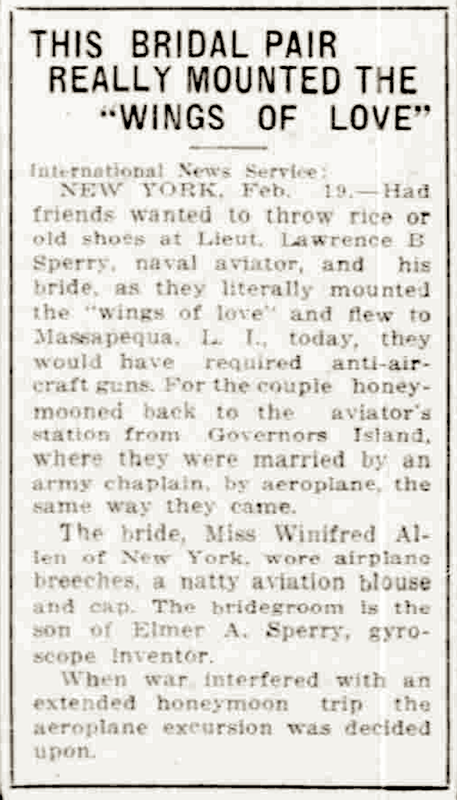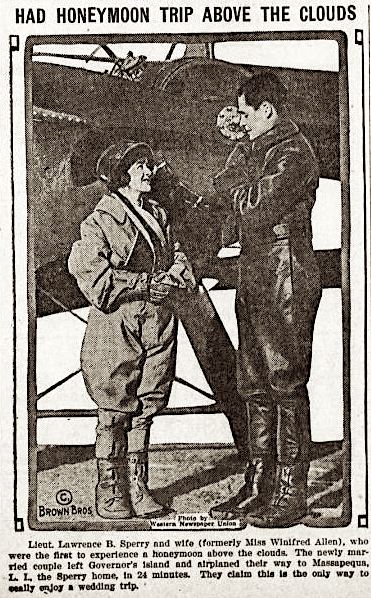'Wings of Love'While the air war rages over Europe across the Atlantic love is in the clouds. It's an American news story we've read before - rich guy marries movie star. Only this time the groom is aviation pioneer Lawrence Burst Sperry, inventor of the autopilot and the artificial horizon. Two days prior the war film 'From Two to Six' starring the bride, Winnifred Allen, had just been released. Sperry, who as one point was the youngest licensed pilot in America, has been recently involved in the design work of what was then commonly called an 'aerial torpedo' - the Hewitt-Sperry Automatic Airplane and the Curtiss-Sperry Flying Bomb (shown below), which three week's hence will achieve "
For the first time in history, an unmanned, heavier-than-air vehicle had flown in controlled flight" (per wikipedia). In this midst of all this the couple found time to enjoy the first 'honeymoon in the clouds'. I love how the reporter suggests that anti-aircraft guns would be needed to throw rice on the newlyweds! This nuptual novelty reminds me of the autogyro wedding scene from the film 'It Happened One Night':
https://www.youtube.com/watch?v=AUVwHGpoasM.
(respectively from the South Bend News-Times, 19 February 1918; and the Meade County News, 28 March 1918):





(image via airminded.org)
Fun Fact: Speaking of 'wings of love' and 'aerial torpedoes', Lawrence 'Burst' Sperry is renowned for another pioneering aviation achievement - being considered the founder of the 'Mile High Club'! However, his historic 'first' was not achieved on his honeymoon flight with Winnifred Allen, but rather two years earlier with a
different socialite. "
Pilot/engineer Lawrence Sperry and socialite Dorothy Rice Sims have been described as the first persons to engage in sex while flying in an airplane; the two flew in an autopilot-equipped Curtiss Flying Boat near New York in November 1916". Sims was described in the contemporary press as "
an expert in motorcycle racing, flying and sculptoring, but her bridge ability was just moderate". (per wikipedia). Perhaps now we know what inspired Sperry to invent the self-flying airplane? Alas, just five years later in 1923 he was disappeared while flying across the English Channel in his Sperry M-1 Messenger biplane and was never seen again. One wonders if his autopilot was on?